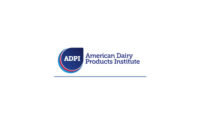Wisconsin produces about 30 billion pounds of whey each year. Once the protein is removed via filtration, we are left with whey permeate. The dairy industry produces a lot of whey permeate, and while the industry has found some uses for it, I believe we could think even bigger.
Whey permeate is mostly water, with only about 6% solids. The majority of those solids are sugars (lactose), with trace amounts of ash and protein.
The dairy industry has developed some value-added uses and applications for whey permeate. For instance, it can be used as a starting material to produce purified lactose and as a sodium replacer in various foods and baked products (due to the presence of various types of dairy minerals).
Another potential option is to use whey permeate as a sports beverage, as it contains valuable electrolytes (recently, milk permeate has been successfully used in a recovery beverage). Whey permeate also has some lower-value applications such as usage in animal feed. Researchers have even used whey to produce beer and other alcoholic beverages.
New usage potential
One of the challenges with whey permeate is that it’s about 94% water and about 4% lactose. This makes it quite expensive to dry, and the process is more complicated than for most other dairy ingredients (due to its high lactose content). In recent years, we have found more galactose in cheese wheys due to the popularity of thermophilic cultures, which is also adding to the drying challenges.
I believe it’s time we rethink whey permeate. In fact, I believe the dairy industry could turn whey permeate into value-added chemicals. There is a significant opportunity to use whey permeate as a substrate for fermentation — specifically, for use as a feedstock for yeast or bacteria to produce valuable chemicals. Bio-based chemicals derived from whey permeate would be renewable and could help displace fossil fuel-derived chemicals.
Lactose is a rather simple sugar that is easily digested by many microbes. In the past 10 years or so, techniques such as metabolic engineering and gene editing have greatly advanced, which can help us engineer microbes to produce high concentrations of specific end products. Researchers are trying to use various wheys or permeates, to produce products such as lactic acid, succinic acid, fatty acids, and the starting materials for biodegradable bioplastics.
A starting point
Recently, researchers from the University of Wisconsin – Madison (Wisconsin Energy Institute, Department of Food Science and Civil and Environmental Engineering) were awarded funding to partner with the dairy industry to explore the fermentation of dairy residues. This approach would help with decarbonizing efforts and improving the overall environmental impact and sustainability of the dairy sector.
Once economically viable processes for producing chemicals from whey permeate are developed, we will also need to figure out isolation/fractionation approaches. I would then anticipate that we could see the building of new facilities that would act like whey refineries in much the same way that crude oil is refined into many valuable chemicals. These whey refineries would be located in places that have high volumes of whey and likely involve the pooling of whey from various cheese plants.
To accomplish this, we need to change our outlook on whey permeate. Instead of viewing it as a waste product, we need to view it as an opportunity and a key part of our sustainability story. In addition, we need to support more research and innovation to bring these ideas to life. I believe the investment would be well worth it. This could be a very positive opportunity for the dairy industry.
John Lucey, Ph.D., is director, Center for Dairy Research.




